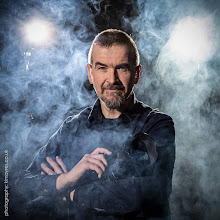The Open Book
Books are portals to other worlds; other dimensions; other people's imaginations. There is something intrinsically magical about words printed onto sheets of paper: symbols the eye sees and the brain translates, which somehow allows the very thoughts and ideas of another person's mind to be absorbed by our own.
And while we mainly communicate these days with texts, messages and emails via hand held devices and computer screens, these words feel ephemeral, temporary and fleeting.
A bound volume of printed words, on the other hand, has a physical and metaphysical weight to it: a sense of age, depth and permanence. Even a trashy novel somehow feels more worthy of our time than a trashy e-book.

Books that are second-hand, used, pre-loved, have an added dimension of having been read by someone else. We are aware that other hands have held this tome, looked at its contents, and passed judgement or absorbed information. In some way we are sharing a moment of time and space with them, just as we are with the original author.
Wigtown has 13 second-hand bookshops, including the largest in Scotland. This, despite only having a population of around 900 people.
One of these bookshops is The Open Book, which you can actually rent via AirBnB (including the small flat above it). For a week you can experience what it would be like to be an actual second-hand bookshop owner. You can create themes, rearrange the window display, or just lock the front door and read for as long as your heart desires.

It is, however, booked solid for the next 3 years and has many hundreds of people on the waiting list. What started out as a late-night, wine-fuelled idea, has turned out to be one of the most sought-after destinations AirBnB has to offer.
So where do I come into this?
A chance conversation led to an unlikely thought, which progressed to a couple of meetings, which culminated in a day-long photo shoot (and week-long editing session) at The Open Book, to create a set of images to entice guests at the venue to invest in their very own narrative portrait.

My storytelling/cinematic/theatrical style of photography could just be an ideal fit for people staying there. People drawn to holidaying at The Open Book are, by their nature, going to be literate and imaginative. So the possibility that some of them might enjoy becoming the hero, heroine, or even villain, of their own epic photo, seems pretty likely.
From a film-noir thriller, to monsters under the bed, to portals to other dimensions - a bookshop offers a perfect venue for creative photography.

In a lovely sense of coming full circle, Wigtown was in a way responsible for moving me towards developing narrative photography as my speciality.
Back in 2011, I was artist-in-residence at the Wigtown Book Festival, taking moody black and white portraits of residents, authors, and visitors. The following year, however, I came up with an idea to take photos of authors as characters from literature.
The festival organisers put out the word to visiting writers to see who might like to be involved, and a dozen of them signed up. They would choose a favourite character from a book, or an author they loved, and I would photograph them as that person.
From John Hegley as Keats, to Maggie Craig as The Mad Hatter, to Sara Sheridan as Miss Scarlet in the Library with the Candlestick – these images stretched my skills in photography further than anything up to that point in time. And the following year they were made into a calendar to help raise funds for the festival.
In order to create these photos, I had to start thinking about outfits, props, backgrounds, and editing styles. I also had to create an image that they would love. This was not about me having a particular style and imposing it on whoever I was photographing: this was about taking their hopes, fears, and desires into consideration, and collaborating with them.
Each image had to be created and edited in an entirely different way. Each image was unique. The only common factors were the concept and me.
I was completely in over my head. This was way beyond anything I had done before.
It was intimidating.
It was frustrating.
It was terrifying.
It was so much fun.
It set me off down an entirely different path, and now this approach to photography has become my signature style.
So to find myself a few years later back in the heart of Wigtown, using the skills I began developing there, to inspire the guests staying in a second-hand bookshop, feels particularly satisfying.
At the moment, before any of those who have booked their stay know this opportunity is on offer, I have absolutely no idea how many are likely to be interested. It might only be a tiny handful, or it might be the vast majority. Right now there is no way to tell.
Hopefully though, some of these photos might fire their imaginations.

Here's a wee behind-the-scenes video (less than one minute long)






Post a Comment